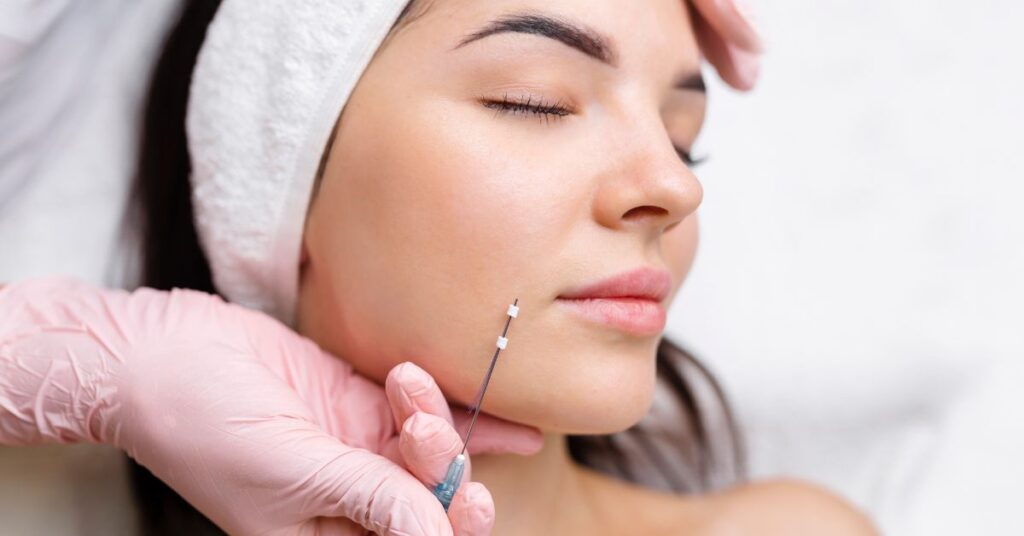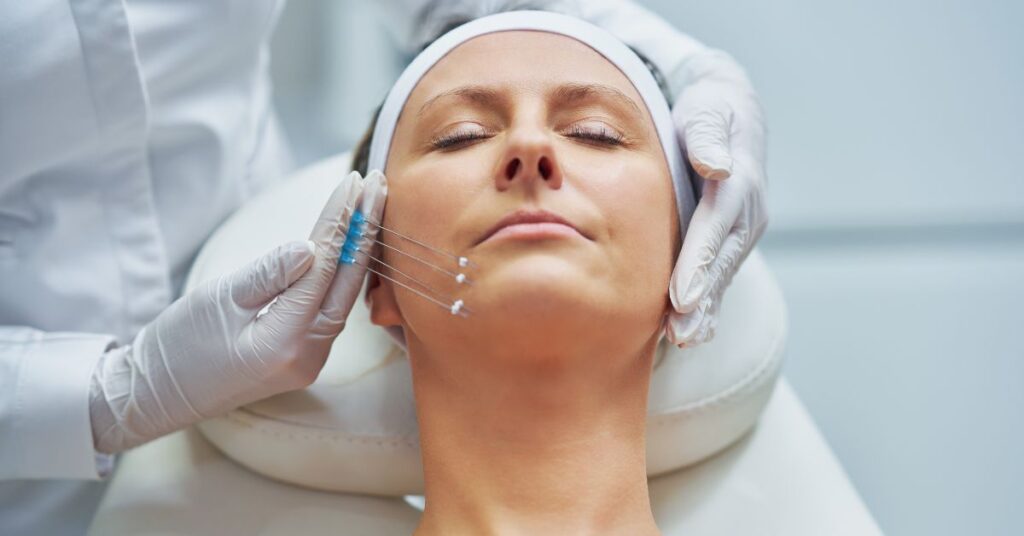
Today, thread lifts have gained popularity as a safe, effective, and reliable alternative to traditional facelift treatments. This innovative procedure offers a way to rejuvenate and lift sagging skin without extensive surgery or a long recovery period. In this article, we will explore the different types of thread lifts, their pros and cons, and help you determine if they are the right choice for your aesthetic goals.
Understanding Thread Lifts
Thread lifts are cosmetic procedures that use specialized sutures to lift and tighten sagging skin. These threads are inserted beneath the skin layer using small needles and then gently pulled to create a lifting effect. The procedure not only provides immediate results but, depending on the types of threads used, can also stimulate collagen production for long-term benefits. This dual-action approach makes thread lifts an attractive option for those seeking a non-surgical facelift alternative.
Thread lifts are used to address various areas of the face, including:
- Laugh lines, marionette lines—lines that extend along the border of the mouth.
- Deep nasolabial folds—lines that extend from the nose to the corners of the mouth.
- Shallow horizontal lip lines, starting from the lip border towards the chin.
How Thread Lifts Work
Thread lifts work through two primary mechanisms: immediate mechanical lifting of the skin and long-term collagen stimulation. When inserted, the threads provide instant support to sagging tissues, creating a visible lifting effect. Simultaneously, they trigger the body’s natural healing response, promoting collagen production around the treated area. This not only provides clear and instant improvement but also contributes to ongoing skin rejuvenation, enhancing skin texture and firmness over time.
Types of Thread Lifts
As a cosmetic procedure practiced since the 1990s, thread lifts have constantly been developed over the years, leading to three main types of thread lifts based on the materials used; PDO, PLLA, and PCL. Each has unique characteristics and applications, and understanding these differences is crucial in determining which type might be most suitable for your specific needs.
1. PDO Threads
PDO or Polydioxanone threads are the most commonly used in thread lifts. They are effective in addressing enlarged pores and fine wrinkles, helping stimulate collagen production in the dermal layer to increase the thickness of thinning skin, and treating acne scarring and skin laxity.
PDO threads normally last 6 – 12 months and are completely absorbed within 6 – 8 months. Despite that, they continue stimulating collagen production for an additional 4 – 6 months, making them an excellent choice for gradual, natural-looking facial rejuvenation processes.
2. PLLA Threads
PLLA, or poly-L lactic acid, is another popular choice among patients. These threads are biocompatible and biodegradable, similar to PDO. The main difference is that PLLA threads are much more powerful collagen stimulators compared to PDO. They are often used as an alternative to dermal fillers and botox for their natural volumizing effects. Additionally, PLLA usually lasts for up to 2 years before being fully absorbed.
3. PCL Threads
PCL threads are the latest innovation in thread lift treatments. They are made of Polycaprolactone, which offers a strong and intricate bonding to the skin, achieving longer-lasting results than the previous types. PCL threads commonly last over 2 years and have a great collagen stimulation effect, even after the threads are dissolved. They’re particularly effective for jawline tightening and mid-face tissue replacement, offering some of the most long-lasting results.
Different types of Thread Lifts

While there are three main materials used in thread lifting today, there are also three additional variations to the shape of the threads. Namely, mono, screw, and cog threads.
Mono Threads
Mono threads are conventional threads with smooth, barb-less surfaces primarily used for skin tightening. They are often placed in a mesh-like pattern to improve skin texture, tighten necklines and sagging, and enhance the forehead and under-eye areas.
The strength of mono threads lies in their ability to stimulate collagen production, gradually improving skin quality over time. While they offer subtle, natural-looking results with minimal downtime, their lifting capability is limited.
Mono threads are particularly effective for individuals with mild skin laxity who desire overall skin rejuvenation rather than significant lifting. However, for optimal results, they may need to be combined with other thread types or complementary treatments.
Screw Threads
Screw threads, also known as tornado threads, consist of one or two intertwined threads around the inserting needle. This particular design allows them to add volume to sunken areas and provide general face-lifting effects. The intertwining nature of screw threads creates a stronger lifting effect compared to mono threads, making them versatile for various facial areas.
Screw threads excel in volumizing and can create a more noticeable improvement in facial contours. However, the insertion process may cause slightly more discomfort than mono threads, and there is a marginally higher risk of visible threads beneath the skin. Despite these potential drawbacks, screw threads remain a popular choice for those seeking a balance between lifting and volumizing effects.
Cog Threads
Cog threads feature barbs that hook onto the underside of the skin, creating a stronger lifting effect. They are particularly effective for jawline lifting and slimming, as well as supporting sagging tissue in various facial areas.
The barbed design of cog threads allows for significant lifting capability without the need for anchoring points, often resulting in more dramatic and long-lasting results compared to other thread types. However, this increased efficacy comes with a higher risk of complications if not properly placed.
Patients may also experience more noticeable side effects, such as temporary dimpling or puckering of the skin. Despite these considerations, cog threads remain a top choice for those seeking more pronounced lifting and contouring effects.
Are Thread Lifts Worth It?
Thread lifts can be an excellent option for those seeking a minimally invasive alternative to traditional facelifts. The procedure offers several advantages, including minimal invasiveness, a short recovery time, and natural-looking results. Additionally, the collagen-stimulating effects contribute to ongoing skin improvement. They are particularly suitable for individuals with mild to moderate skin laxity who want to achieve a more youthful appearance without surgery.
However, it’s important to note that results are not as dramatic or long-lasting as surgical facelifts. There is also a potential for complications if the procedure is not performed by a skilled practitioner, and periodic touch-ups may be necessary to maintain results. Ultimately, the worth of different types of thread lifts depends on individual goals, expectations, and willingness to accept the limitations of a non-surgical approach.
Choose MedConsult Clinic for Aesthetic Treatment
If you’re considering thread lift services or other aesthetic services in Bangkok, MedConsult Clinic is a trusted provider of non-invasive treatments. With a team of experienced medical professionals and advanced technology, MedConsult offers a safe, comfortable, and effective treatment experience. Our team can guide you through the decision-making process and ensure you receive safe, effective treatment.
Our personalized approach ensures that your treatment plan is tailored to your unique needs and goals. We’ll guide you through every step of the process, from initial consultation to post-treatment care, ensuring you achieve optimal results and feel confident in your rejuvenated appearance.
Book an appointment here
Contact us
Tel.: +66 61-171-1000
Email: customer@medconsultasia.com
LINE: @medconsultclinic
WhatsApp: Medconsult Customer Service
WeChat: DrDonnaRobinson
